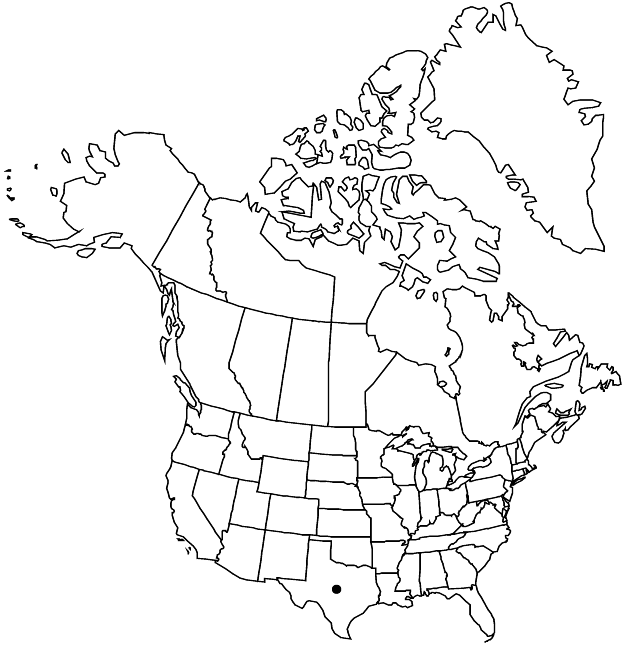Difference between revisions of "Paronychia setacea"
Fl. N. Amer. 1: 170. 1838.
FNA>Volume Importer |
FNA>Volume Importer |
(No difference)
| |
Revision as of 22:37, 16 December 2019
Plants annual, biennial, or perennial; taproot filiform to slender. Stems erect to ascending, much-branched distally, 5–20 cm, finely pubescent to puberulent. Leaves: stipules lanceolate, 3–8 mm, apex acuminate, entire; blade linear, 5–20 × 0.3–1 mm, leathery, apex minutely cuspidate, glabrous. Cymes terminal and lateral, 5–20+-flowered, dichasial and rather diffuse, forming clusters 3–15 mm wide. Flowers 5-merous, ± short-campanulate, with enlarged hypanthium and calyx widening distally, 2.4–3.2 mm, moderately pubescent proximately with antrorsely appressed to spreading hairs; sepals green to tan, midrib and lateral pair of veins absent to evident, oblong, 1.2–1.3 mm, leathery to rigid, margins whitish to translucent, 0.05–0.1 mm wide, scarious, apex terminated by awn, hood ± obscure, narrowly rounded, awn widely divergent, 0.6–1.3 mm, broadly conic in proximal 1/3 with white to yellowish, scabrous spine; staminodes subulate, 0.6–0.7 mm; style 1, cleft in distal 1/2, 0.4–0.6 mm. Utricles ovoid-oblong, 1 mm, smooth, glabrous. 2n = 64.
Phenology: Flowering spring–fall.
Habitat: Limestone barrens, gravelly or sandy slopes and grasslands
Elevation: 30-200 m
Discussion
We could not distinguish Paronychia lundellorum from P. setacea based on features that Turner used for differentiation, nor did we discover any other discriminating characters. The former was described as perennial (versus annual for the latter) and as having “decided pedicellate” (versus sessile) and longer flowers. Recent data (W. Carr, pers. comm.) indicate that it does bloom in the first year. Furthermore, we have observed that the pedicel character is inconsistent and the flower lengths overlap extensively. Further study of the allopatric populations named P. lundellorum is warranted.
Selected References
None.
